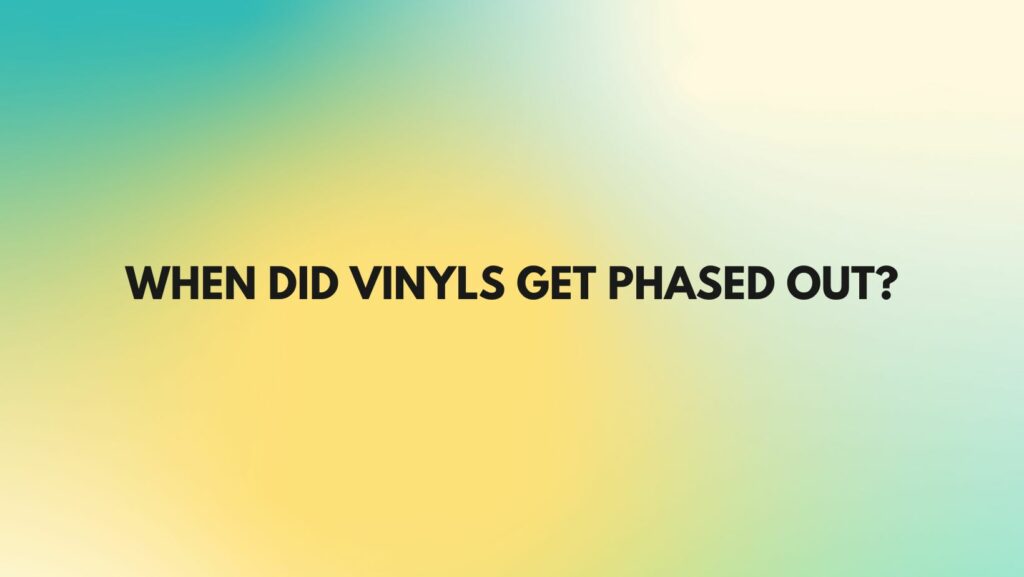The evolution of music formats is a dynamic journey marked by technological advancements, shifting consumer preferences, and industry-wide transformations. Vinyl records, once the reigning monarchs of music consumption, experienced a gradual decline that coincided with the rise of new formats. In this article, we embark on a journey through time to explore when vinyl records were phased out and the factors that led to their diminished prominence in the music industry.
- The Rise of the Compact Disc (CD):
The late 1970s and early 1980s witnessed the emergence of a revolutionary new format—the compact disc (CD). Offering a digital, skip-free listening experience, CDs gained rapid popularity for their durability and superior sound quality compared to vinyl records. As a result, record labels shifted their focus towards CD production, marking the beginning of the end for vinyl’s era of dominance.
- Digital Technology and the MP3 Era:
The late 1990s and early 2000s saw the advent of the digital age with the proliferation of MP3 files and digital downloads. This seismic shift in music consumption habits posed a significant challenge to physical formats like vinyl. The convenience of digital files, easily stored on computers and portable devices, further diminished the appeal of vinyl records.
- Record Stores and Shelf Space:
As the popularity of CDs and digital downloads soared, vinyl records began to lose shelf space in record stores. Many retailers reduced or phased out their vinyl sections to accommodate the growing demand for CDs and, later, digital media. This shift in inventory signaled a changing landscape in how consumers accessed and purchased music.
- Music Industry Consolidation:
The consolidation of the music industry during the late 20th century played a role in the phasing out of vinyl. Major record labels, driven by economic considerations and the pursuit of efficiency, streamlined their production processes to prioritize the more profitable CD format. Vinyl production became increasingly marginalized, with limited releases becoming the norm rather than the rule.
- Technological Advancements in Digital Audio:
Advancements in digital audio technology contributed to the decline of vinyl records. Audiophiles seeking the clearest and most accurate sound reproduction were drawn to the capabilities of digital formats. While vinyl’s warm analog sound remains revered, the gap in sound quality between analog and digital formats narrowed, making digital alternatives more attractive to a broader audience.
- Vinyl Resurgence in the 21st Century:
While vinyl records were phased out from mainstream production and consumption, they never truly disappeared. The 21st century brought about an unexpected resurgence of interest in vinyl, driven by a renewed appreciation for analog sound, tangible ownership, and the unique experience of playing a record. Vinyl, once considered a relic of the past, found new life among collectors, enthusiasts, and even younger generations discovering its nostalgic charm.
Conclusion:
The phasing out of vinyl records unfolded over several decades, with the rise of new formats and digital technology reshaping the music landscape. While vinyl’s decline from mainstream dominance was a complex process influenced by various factors, its persistence in the face of technological advancements underscores the enduring appeal of analog sound and the tangible connection that vinyl provides to the rich history of music. The vinyl revival in the 21st century stands as a testament to the format’s resilience and its ability to transcend the confines of obsolescence.

